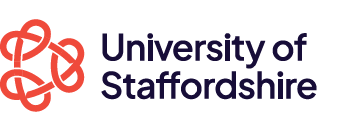by Onkar Chavan international student on the MSc Digital Marketing Management
Stoke-on-Trent is a city located in the central region of England, specifically in Staffordshire County. As of the 2021 census, the city’s population exceeds 258,400 individuals. “The Potteries” is the collective name for the city’s five towns: Tunstall, Burslem, Hanley, Stoke, Fenton, and Longton. This name originates from the city’s rich history in pottery production.
The city is the World Capital of Ceramics. For centuries, the city has been moulded by its pottery production, fostering a globally renowned reputation for innovation, science, art, culture, and entrepreneurial spirit. Even today, the city remains an irresistible destination for pottery enthusiasts!
With engaging factory tours, exceptional visitor centres, and captivating museums, you’ll be immersed in the rich history and tradition of this time-honoured craft. Moreover, you can get hands-on experience, trying your hand at the potter’s wheel for a truly entertaining insight.
Make your university experience even more exciting in Stoke-on-Trent city as we show you four interesting places to visit in the city that will make your experience more unique!
- The Potteries Museum & Art Gallery
One of the top attractions for Art and History lovers is the Potteries Museum & Art Gallery. Located in the Town of Hanley and within a walking distance of 20 minutes from Staffordshire University. A major highlight of the Museum is the impressive Spitfire Gallery, dedicated to the renowned aircraft.
Back in 1972, the City of Stoke-on-Trent received a generous donation of Spitfire RW388. This exceptional plane serves as a tribute to Reginald J. Mitchell, the brilliant mind behind the Spitfire’s design, who hailed from North Staffordshire and became one of the most illustrious aeronautical engineers of his time. After a meticulous three-year restoration project, the iconic Spitfire has been restored to its former splendour and now commands the 3800 sq ft, glass-fronted gallery, offering the privilege of 24/7 viewing. Alongside the RW388 Spitfire, the permanent exhibition also showcases captivating displays that celebrate the life and achievements of the iconic designer, Reginald Mitchell.

Step into Stoke-on-Trent’s rich history at the Local History Gallery. Explore recreated room settings, from a nostalgic schoolroom to a charming pub and a cosy chip shop, immersing yourself in the past.
Nature lovers will be captivated by the Natural Science gallery’s vivid depiction of the Potteries’ geology and wildlife. Discover the beauty of moorlands, forests, and wetlands with meticulous detail. Don’t miss the interactive Discovery Zone, where you’ll learn about preserving our diverse natural world.
- Trentham Estate Gardens
The Trentham estate, located in Staffordshire, England, became a showcase of Brown’s genius, featuring sweeping lawns, serene lakes, and strategically placed groves of trees that seamlessly blend with the surrounding countryside. Capability Brown, a renowned English landscape architect of the 18th century, left an indelible mark on Trentham Estate gardens.

Fast forward 250 years, and today you’ll witness one of the most remarkable garden restorations of the past half-century. The great Italian Garden has been lovingly restored by Tom Stuart-Smith, boasting an array of plants, fountains, and enchanting walkways. Alongside, a pergola adorned with diverse rose varieties adds to the charm. Visitors can either enjoy a circular walk around the lake or opt for boat trips to savour this natural masterpiece.
- Factory Tours and Shops
Being the World Capital of ceramics, the city has many factories and shops Observe the fascinating process of crafting products, as 20 skilled pairs of hands meticulously contribute to the creation of each item. Step into the shops, where you can find a splendid collection of fully sustainable, UK-made fine bone China items.
For a mere £7.50, the Moorcroft Heritage Visitor Centre offers an unforgettable experience, encompassing a captivating factory tour, the exploration of a Grade II listed bottle oven, delightful shopping, and an enriching museum visit.
The factory tour is a mesmerizing journey, revealing the intricate processes behind each unique, hand-crafted Moorcroft piece. Remarkably, these time-honoured techniques have remained unchanged for over a century. Crafted by hand for collectors worldwide, the designs boast rich, deep colours, resulting in stunning works of art available for viewing and purchase at the Moorcroft shop.
You can also visit LoveClay Ceramics Centre, Duchess China 1888 and Emma Bridgewater Factory.
- Trentham Monkey Forest
Looking for some wildlife experience? Trentham Monkey Forest is your place to go.
The enchanting Trentham Monkey Forest is a haven for 140 free-roaming Barbary macaques. Nestled in the serene woodlands of Staffordshire, this extraordinary sanctuary allows the monkeys to thrive without cages or bars. Embark on a mesmerizing 3/4-mile woodland path, where you can witness these playful creatures living freely, just as they would in the wild. Be captivated as they frolic on the ground and swing from the trees, displaying their natural behaviours in all their glory. Don’t be surprised if they venture right in front of you!






















